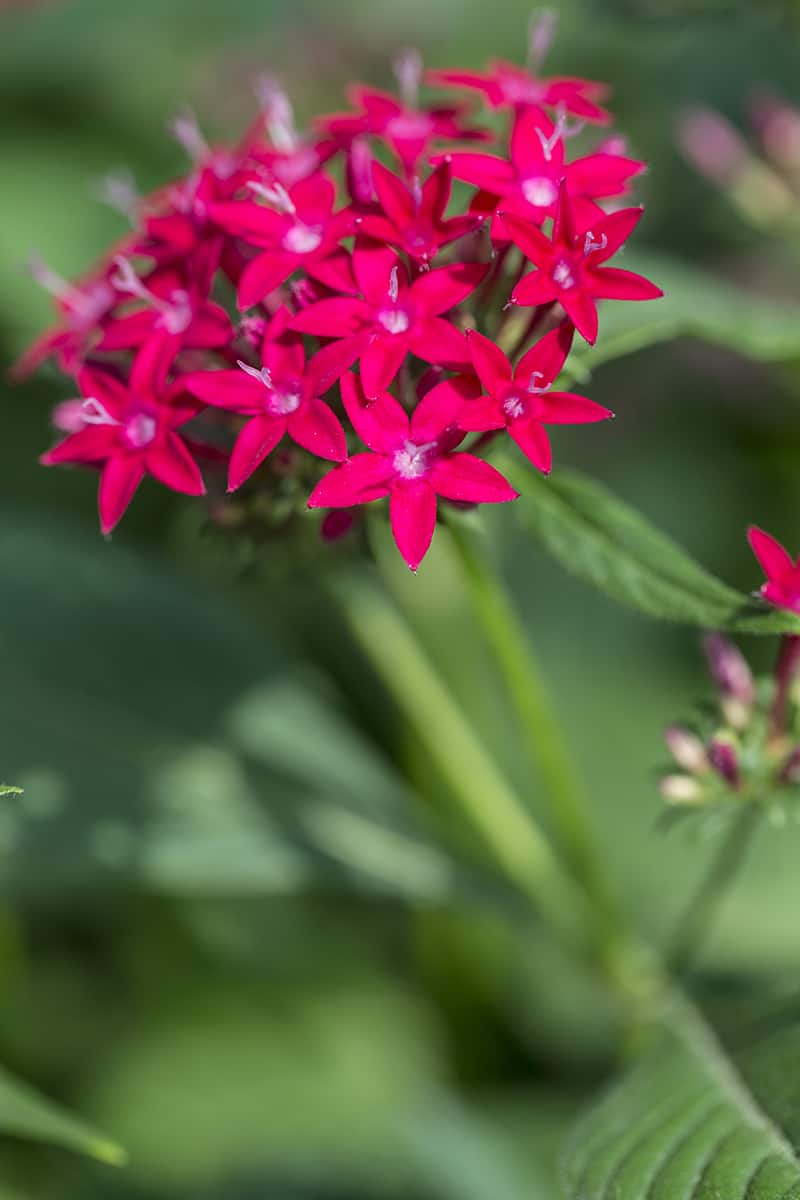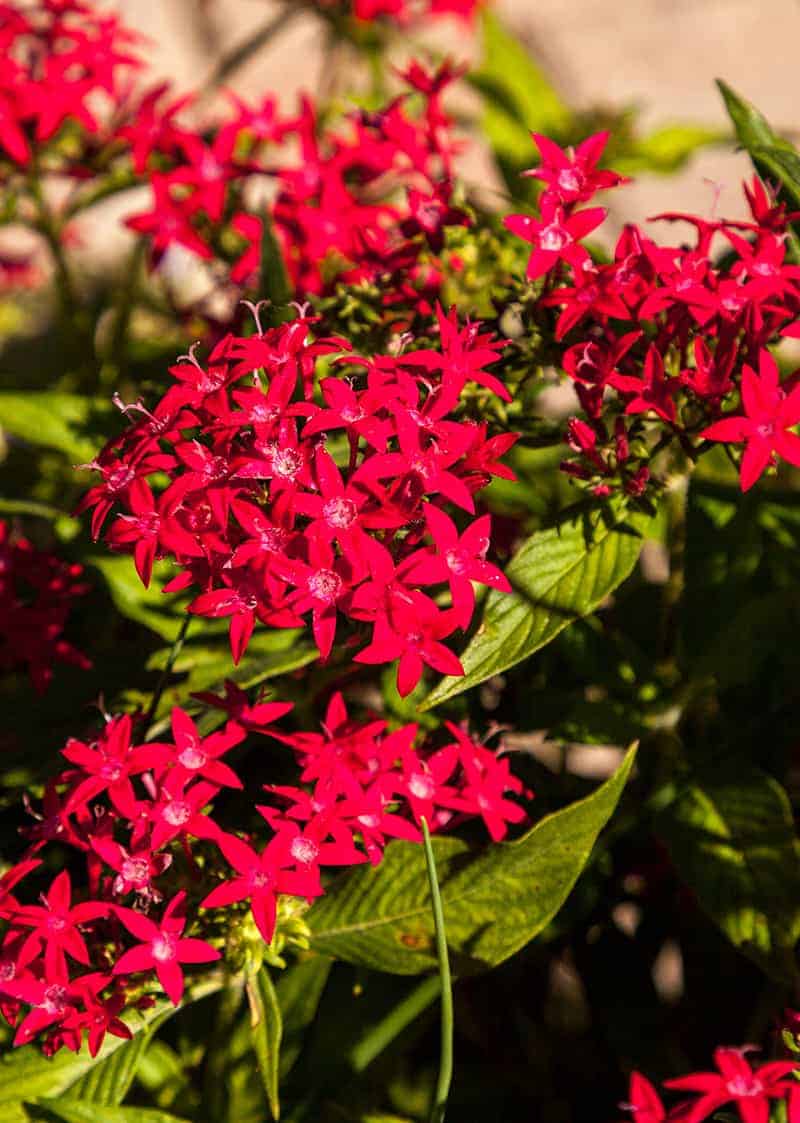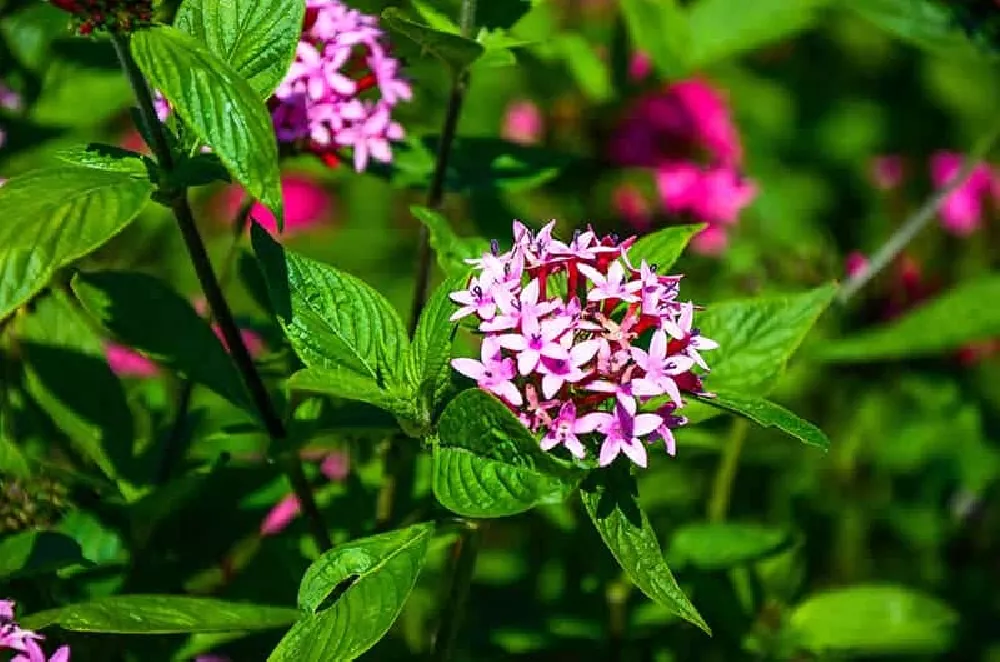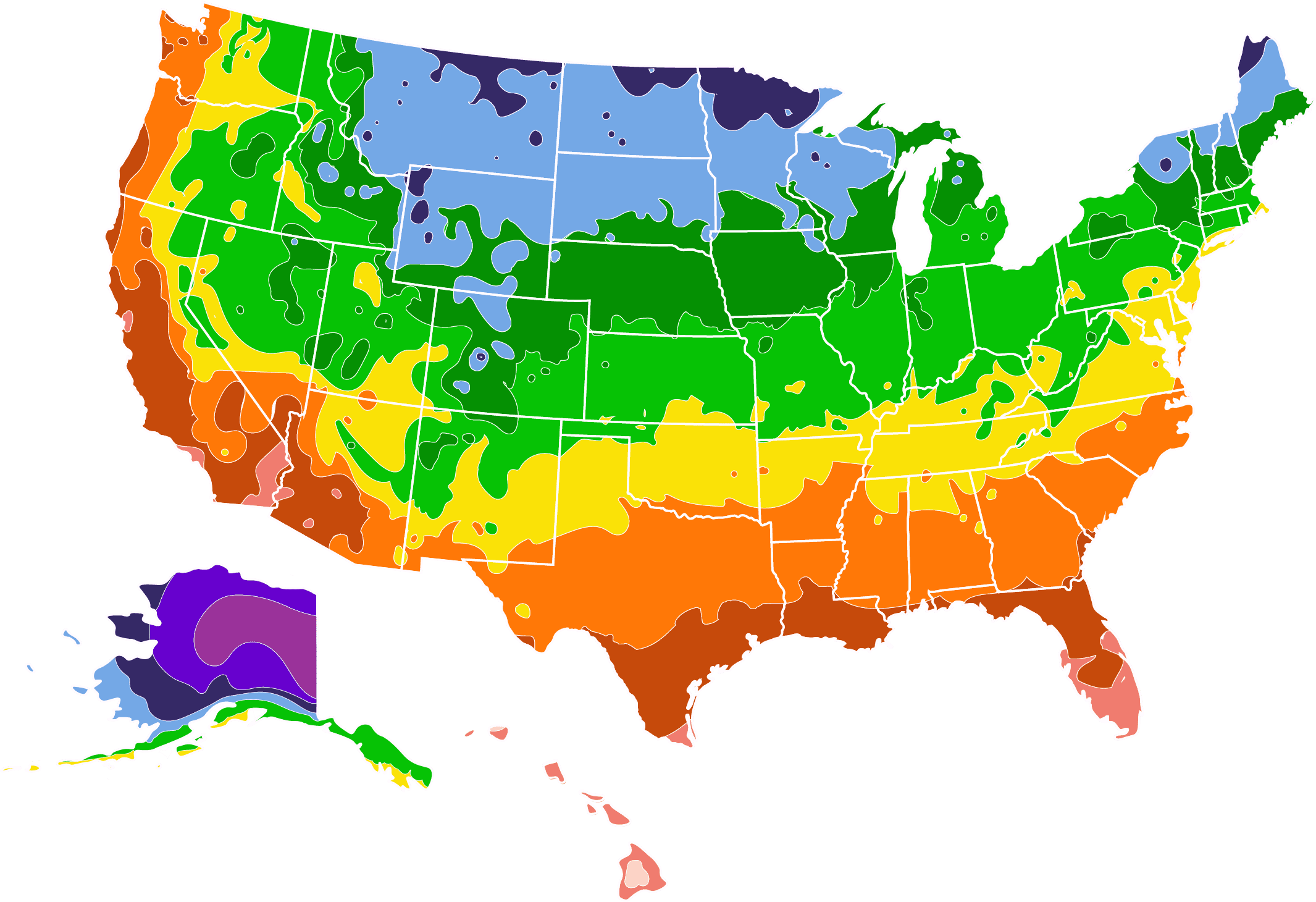- Home >
- Houseplants >
- Pentas Plants
Pentas Plants for Sale
Lowes - 6-Pack - Multicolor Pentas in Tray
Enter your zip code to find nearby stores that may carry this plant.
If you’re looking for a showy, easy addition to a sunny spot in your garden, you cannot do much better than a Pentas plant. Pentas feature clusters of star-shaped flowers that bloom year round in warm, humid climates. They do well in both landscaping beds and containers. Those who live in humid, warm weather climates can plant the Pentas as a perennial that blooms throughout the year, while cold climate gardeners will delight in its vibrant colors as an annual that blooms all summer long. Here are some other notable facts about the Pentas plant:
- Does best in full sun and soil that is moist but well drained.
- Is low-maintenance and produces excellent cuttings for flower arrangements.
- Attract butterflies, honey bees, and hummingbirds.
Planting and Care
Planting instructions
Whether your garden is in a warm weather area where the Pentas thrive as a perennial, or a colder zone, where it grows as an annual, choose a sunny spot with well drained, mildly acidic soil. They also do well in a shadier area but will produce fewer blooms and will grow leggy as they reach for the sun. Pentas need enough room to reach their mature size of 15 inches wide and three to four feet high. A couple inches of mulch at their base helps them hold onto their water and keeps weeds away.
Pentas do not tolerate the cold, so if frost is expected, they can be protected by covering them with a sheet or placing warming lights around them. Pentas do very well as container plants and if you live in a cold weather area bring the Pentas inside and place it in a sunny spot over the winter months..
Watering and nutrients
When you first plant your Pentas keep its soil moist to allow the root system to become established. After it is acclimated to its new location it will require little attention, only needing water when rainfall is sparse.
The plant benefits from being fertilized in the spring with a slow release granular fertilizer and then followed every six weeks with a water soluble version that it can absorb quickly.
Propagation
Pentas can be planted from seeds but they are remarkably easy to propagate from cuttings. To do so simply prepare small pots with a moistened mix of peat moss and perlite, making a hole in the planting medium with a pencil or chopstick. Take a cutting from the parent plant early in the morning, stripping away leaves that are near the cut end, and any blossoms, and then dipping the cut end into rooting hormone before placing it in the prepared pot. Place the new plant in an area that is protected from sun and wind, keeping the soil moist. In a few weeks roots will begin to grow and the plant will be ready to be transplanted. Make sure to provide new plantings with plenty of water.
If you want to plant Pentas from seed, you can do so indoors two months before the first frost or outdoors when the weather is consistently warm. Start seeds in individual cells and then transplant them into a small pot once they have developed two pairs of real leaves. Remember, they require both light and dark to germinate, so seeds planted indoors should not be kept under grow lights 24 hours a day, and all seeds should be placed on the top of the soil and not covered. Green shoots will emerge in two to three weeks, and seedlings grown indoors will need to be hardened off by gradually exposing them to outdoor conditions before moving them into the garden.
Pruning
Because Pentas are subshrubs, the bottom section of the plant’s stems become woody while new growth remains tender and green. When allowed to grow unfettered the stems will grow tall and the tops will flop over, so the plants benefit from being pruned on a regular basis. Though it can feel like a waste to cut off branches that are flowering, doing so will result in more blooms in a few weeks and will keep the shrub looking full. Dead flower heads should also be snipped off.
By contrast to how they are managed during the growing season, perennial Pentas should not be cut back during the cold weather months when its blooms slow down or stop. The best time to give the plant a hard pruning is in the early spring when new leaves are emerging.
Pests, diseases, and animals
Pentas are not generally vulnerable to diseases but they do attract both spider mites and aphids. These pests can do serious damage, so when the weather gets hot keep your eyes open and treat with an insecticidal soap or strong spray of water.
One of the most important and enjoyable aspects of having Pentas in your garden is its ability to attract hummingbirds, butterflies, and sphinx moths, which look like hummingbirds. The flower clusters provide excellent spots for bees and butterflies to light upon, and the nectar hidden at the throat of each bloom is irresistible for nectar loving wildlife.
Temperature
This plant is very versatile and can be grown as a perennial in warm climates or as an annual outdoors in areas which experience cold winters. When grown as an annual they will flourish in summer and die back after the first frost, bouncing back to life in spring providing their roots haven’t gotten too cold over winter.
As a semi-tropical plant, Pentas loves warm weather and will happily grow outdoors all year longer in warmer western climates. However, if your region does experience cold winters, you do have the option of planting your Pentas plant in a container and bringing it inside over winter. If you do this, you then have two possible options; you can keep it as a houseplant where it will continue to bloom all winter if kept in a warm and bright spot, or alternatively, you can put the plant in a dark and cool spot such as a basement or garage, where the plant will go dormant. The plant can then be brought back outside after the final frost, and continue growing.
If you would prefer, you can actually keep the Pentas plant inside all year round. Newer varieties tend to be more compact and are well suited to use as a houseplant. In this case, as long as you are comfortable with the temperature in your home, then your Pentas plant will be too. It enjoys warm spots away from cold drafts.
Light
The Pentas plant needs plenty of sunlight to produce its striking flowers. It will thrive in a position of full sun but can also tolerate partial shade in the afternoon as long as it receives a good three to six hours of direct sun each day. If the plant does not get enough sun, you will notice it by the lack of flowers, and its leggy appearance. If kept as a houseplant, situate the plant in a bright window where its light criteria can be met.
Flowering
The flowers of the Pentas plant grow in clusters and come in shades of white, purple, pink, and red. The five-petalled flowers form the shape of a star, and they are very attractive to butterflies and hummingbirds (University of Florida- Gardening Solutions). The plant blooms all year round in ideal conditions, providing continuous interest.
Pentas Plant Varieties
Graffiti Lipstick

This Pentas variety has a compact size, growing to around 12 inches in height. It features shocking pink flowers.
Graffiti Red Lace

This plant grows to around one foot tall and has two-toned flowers. The blooms are predominantly red but feature startling white centers which make a stunning contrast to the red.
Northern Lights Lavender
This Pentas plant is a larger variety, growing to heights of 4 feet. It has delicate-looking flowers in a soft shade of pink-lavender and can tolerate slightly cooler temperatures (Better Homes and Gardens).
Kaleidoscope Appleblossom
At 18 inches tall, this Pentas plant grows to a moderate height. It has clusters of pale pink flowers.
FAQs
Can Pentas plants be grown indoors?
Pentas love bright light and can be overwintered in containers indoors as long as the soil has good drainage and they are kept in a warm sunny room or greenhouse in direct sun.
Are Pentas plants poisonous?
Pentas are not only nontoxic, in Africa they have long been known for their medicinal properties. Different parts of the plant are used for rashes, skin diseases, pimples, and to treat tapeworm, malaria, and a variety of sexually transmitted diseases. Chemical analysis of compounds found in its leaves have been shown to have antiviral, antibacterial, and healing properties.









